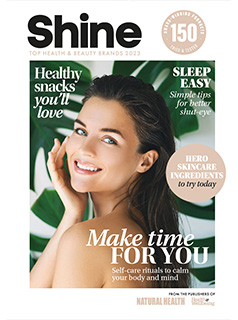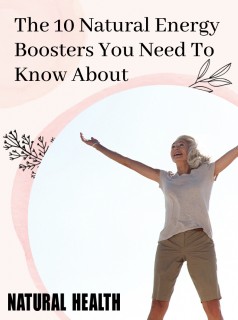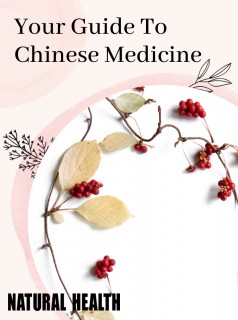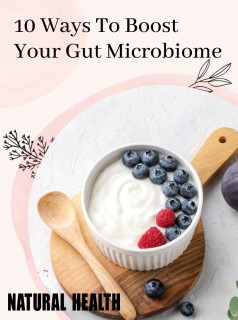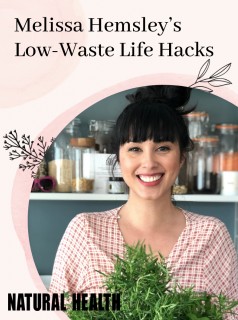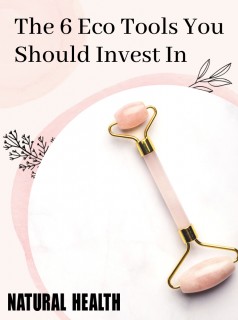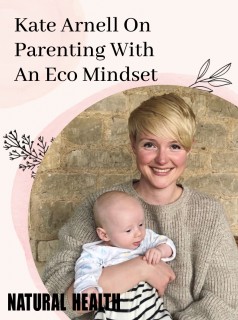One in three women now takes supplements, but certain vitamins and minerals can be harmful in high doses says Carina Norris
One in three women now takes supplements , but certain vitamins and minerals can be harmful in high doses. Registered nutritionist Carina Norris sheds some light on the matter
The Committee on Medical Aspects of Food and Nutrition Policy (COMA) and the Department of Health have devised recommendations for how much we need of the main micronutrients – these are called Dietary Reference Values or DRVs. But new research is constantly emerging suggesting that increased dosages – higher than you could get from food – could protect us from disease. So, should we consider the DRVs a bare minimum and think about taking more in order to gain extra benefits?
Many of us do, as one in three women (and one in four men) take supplements. But are they safe? This debate was thrown into sharp relief by a 2008 review of the scientific literature by the Cochrane Collaboration, on the subject of antioxidants (beta-carotene, vitamin A, vitamin C, vitamin E and selenium) for reducing cancer risk. The big surprise was the lack of evidence that supplements reduced the risk of dying. Taking beta-carotene, vitamin A and vitamin E actually increased mortality rates. And while there was no evidence that vitamin C and selenium did any harm, they appeared not to help, either.
There are two levels of safety recommendations, set by the Expert Group on Vitamins and Minerals (EVM). ‘Safe Upper Levels’ are the amount that a healthy person could take every day on a life-long basis. But for some nutrients there isn’t enough scientific data available to calculate a Safe Upper Level – and for these, the EVM issues ‘guidance’ on how much we could expect to take safely, based on the limited data available.
The uptake of some nutrients depends on the levels already in our bodies, so it’s harder to overdose. With the water soluble vitamins (B and C), most of the excess can be flushed out in our urine if we take too much. But the fat soluble vitamins (A, D, E and K), plus many minerals, can be stored in the body, accumulating over time to potentially harmful levels.
With the watersoluble vitamins most of the excess can be flushed out in our urine if we take too much, but the fat-soluble vitamins can be stored in the body, accumulating over time
Fat-soluble vitamins
These can accumulate in the body. But they pose no danger if you stick to the safe limits.
Vitamin A
Problems occur when retinol (the ‘pre-formed’ form of vitamin A) is taken over a long time, building up stocks too great for the liver to destroy or store. Research suggests that longterm dosages over 1,500ug daily can reduce bone density, increasing your osteoporosis risk.
All red meat is a good source, but liver or liver products such as pâté are super-rich in vitamin A. Many multivitamins contain vitamin A and fish liver oil is also very high in retinol. So, if you eat a vitamin A-rich diet, be careful with supplements.
Too much vitamin A is linked with birth defects, so pregnant women should avoid eating liver or liver products and avoid taking supplements containing vitamin A.
Beta-carotene
The body converts this phytochemical into usable vitamin A, but only as and when we need it, so it’s a safer way of getting your vitamin A. There’s no evidence that beta-carotene from food could be harmful, but some research showed an increased incidence of lung cancer among smokers who were taking beta-carotene supplements (20-30mg, alone and in combination with other nutrients). There’s no data suggesting that beta-carotene is harmful to nonsmokers, but to be safe, the Food Standards Agency says don’t take more than 7mg daily, and smokers are advised not to take it at all.
Vitamin D
There’s no evidence that doses up to 20ug daily cause side effects, and long-term supplementation up to 25ug appears to be fine for most people. However, one study suggested that 25-50ug may increase kidney stone risk in susceptible people.
Vitamin E
Although this is accepted as a very ‘safe’ vitamin, high doses can interfere with the body’s use of other fatsoluble vitamins, as well as causing headaches, nausea and muscle weakness.
Water-soluble vitamins
Vitamin B1 (thiamin)
Dosages in the 1,000s of mg can sometimes cause symptoms such as headaches, nausea and irritability.
Vitamin B2 (riboflavin)
Riboflavin has a low absorption rate in the gut, so many times the minimum recommendation can be taken.
Vitamin B2 (niacin)
Overdoing the DRV of niacin (which is generally taken as nicotinic acid or nicotinamide) by just three times can cause flushed and itchy skin, nausea and vomiting. The EVM guidance says stick to less than 17mg nicotinic acid supplements or 500mg or less of nicotinamide.
Vitamin B6
Too much vitamin B6 can cause a loss of feeling in the arms and legs, known as peripheral neuropathy. This can be caused by one-off doses of 200mg, or lower doses (10 – 200mg daily) over the long term.
Folic acid (folate)
Pregnant women and those planning a pregnancy should take a 400ug supplement to reduce the risk of neural tube defects in their baby. The EVM guidance states a maximum of 1,000ug daily.
Vitamin B12
Elderly people are less able to absorb this nutrient, and some nutritionists recommend they take more than the minimum recommendation (pregnant and breastfeeding women also have higher requirements).
Vitamin C
Vitamin C is involved in immunity and wound healing. Its antioxidant properties reduce our risk of cardiovascular disease and cancer and many nutritionists believe the recommendation for this vitamin is too low. Also, because it’s water-soluble, it’s important to keep our levels topped up.
We’re advised to get at least 40mg daily (slightly more for pregnant and breast-feeding women), but supplements commonly provide up to 1,000mg. The main side effect from high doses is diarrhoea. Vitamin C is very safe – in two supplementation trials up to 1,000 mg/day was taken for up to five years without side effects.
Minerals
Salt (sodium)
Intake should be below 6g salt or 2.5mg sodium daily because of its blood pressureraising effect, which can increase our risk of heart disease and stroke.
Calcium
The body controls calcium metabolism so tightly that it’s virtually impossible to take too much. Taking more than the EVM guidance could lead to diarrhoea and stomach pain.
Iron
Dosages from 50 to 220mg daily can cause constipation, nausea and vomiting. Up to 17mg is safe for most people, but some need more. For example, iron deficiency anaemia is common in pregnancy, and your doctor may prescribe a higher dose.
Zinc
Too much causes stomach cramps and nausea, especially if taken on an empty stomach.
Magnesium
There’s little data on magnesium supplements. Taking too much for a short time can cause diarrhoea, and we don’t know the effects of high intakes long-term.
Chromium
The EVM’s guidance is that up to 10mg of the trivalent form of chromium would be safe. Less is known about the chromium picolinate form.
Food combos that enhance absorption
FOOD COMBO
WHY IT WORKS
Baked beans on toast with a glass of orange juice
The vitamin C in the orange enhances the uptake of the iron in the beans
Veggie chilli made with tinned tomatoes
The vitamin C in the tomatoes enhances the uptake of iron from the beans
A salad of sliced tomato with a walnut oil dressing
The oil enhances the uptake of the phytonutrient lycopene from the tomatoes
Baked egg custard
The vitamin D in the egg yolk enhances the uptake of the calcium in the milk
Steamed broccoli drizzled with olive oil
The fat in the oil helps the absorption of the vitamin E in the broccoli
Wholemeal toast with olive spread
The fat in the spread enhances the absorption of the vitamin E in the whole wheat grains
Tofu and spinach stir-fry with sesame seeds
The tofu is a rich calcium source, while the spinach and seeds are also good for magnesium, enhancing calcium uptake and use in bone-building
Cheese omelette
The cheese is good for calcium, while eggs provide vitamin K, which helps with calcium uptake
PILL POPPING
Some points to bear in mind
Total up the dosages in all your supplements to check for any overly high intakes.
Make sure that you know your units – milligrams (mg) are thousandths of a gram, micrograms (mcg or ug) are millionths of a gram, while IUs (International Units) depend on the nutrient itself.
It’s important to tell your doctor about any supplements that you are taking if you’re prescribed medication or need an operation, as some can cause interactions.
If you’re pregnant or planning a baby, ask your care team for advice on supplements.
Only get advice from qualified health professionals – a dietician (RD), or a registered nutritionist (RNutr).
Article by
Carina Norris
Registered Nutritionist
Registered nutritionist Carina Norris is an author and health journalist. She was the nutritionist for Channel 4s Turn Back Your Body Clock, and her 12 books include You Are What...
Discover more
Article by
Carina Norris
Registered Nutritionist
Registered nutritionist Carina Norris is an author and health journalist. She was the nutritionist for Channel 4s Turn Back Your Body Clock, and her 12 books include You Are What...
Discover more


 By Carina Norris
By Carina Norris 



